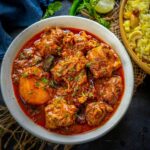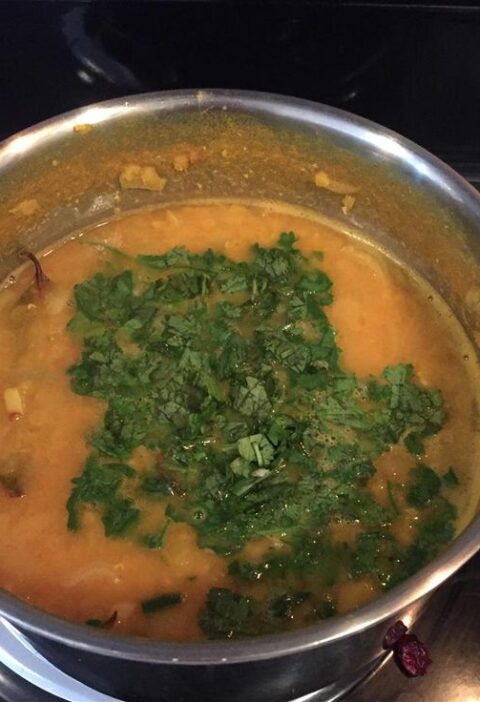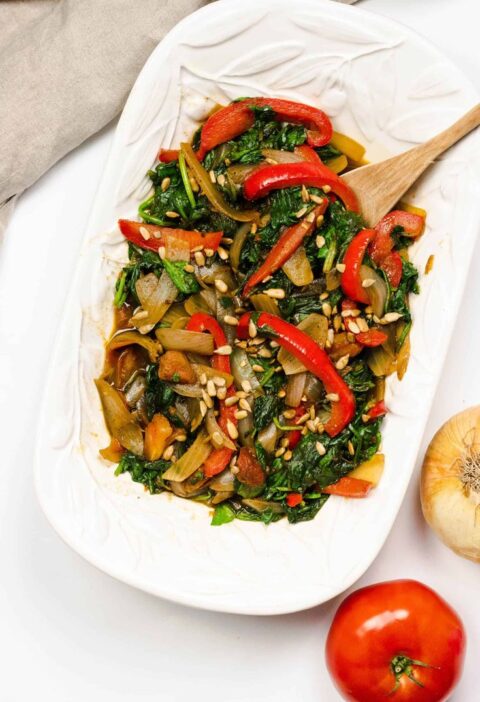1 Delicious Bangladesh Spicy Dry Chicken (Kosha Murgir Mangsho). At the core of Bengali culinary tradition rests a captivating dish named Spicy Dry Chicken, also called Kosha Murgir Mangsho. This savory creation highlights Bengal’s culinary expertise, presenting a harmonious blend of spices and textures. Succulent chicken chunks undergo marination in a fragrant array of spices, then simmered slowly until the flavors harmonize, producing a dish brimming with rich flavors and complexity. Whether relished on its own or accompanied by steaming rice or crusty bread, Spicy Dry Chicken guarantees a delightful exploration of Bengal’s lively and diverse flavors.
1 Delicious Bangladesh Spicy Dry Chicken (Kosha Murgir Mangsho)

1 Delicious Bangladesh Spicy Dry Chicken (Kosha Murgir Mangsho) in Bengali culinary tradition, stands as a cornerstone of Bengal, India, and Bangladesh’s gastronomic legacy. This savory dish tantalizes palates with its intricate blend of fragrant spices and succulent chicken, creating a harmonious medley of flavors and textures that epitomize Bengali cuisine.
Central to the creation of Spicy Dry Chicken is a meticulous process involving marination and slow cooking, allowing the flavors to mature and deepen. Chicken pieces undergo an initial marination in a fragrant spice blend comprising ginger, garlic, cumin, coriander, turmeric, chili powder, and a hint of zesty lime juice. This infusion imparts layers of complexity, ensuring each mouthful bursts with taste.
Following marination, the chicken undergoes a slow-cooking process, enabling the spices to amalgamate, resulting in a luscious, robust sauce enveloping the tender meat. The gradual cooking method is crucial for achieving the desired consistency and depth of flavor in Spicy Dry Chicken.
A distinguishing characteristic of this dish is its dry texture, achieved through the slow cooking process. As the chicken gently simmers in its juices alongside the aromatic spice medley, moisture evaporates, leaving behind a concentrated sauce that clings to every morsel of chicken. The outcome is a dish replete with richness, fragrance, and flavor, cherished by Bengali households.
The versatility of Spicy Dry Chicken adds to its allure, making it suitable for various dining occasions. Whether savored alone, paired with steamed rice or crusty bread, or incorporated into elaborate Bengali feasts, its robust flavors and hearty consistency cater to diverse preferences.
Beyond its culinary appeal, Spicy Dry Chicken serves as a window into Bengal’s rich cultural tapestry. Reflecting a fusion of traditional Bengali spices with culinary techniques from neighboring regions, each bite narrates a story of centuries-old culinary heritage, transcending mere sustenance to offer a cultural immersion.
For Bengalis, Spicy Dry Chicken evokes sentiments of nostalgia and familial warmth, often gracing special gatherings and celebratory meals. The aroma of spices permeating the air, the sight of golden-brown chicken simmering in pots, and the jovial atmosphere of shared meals encapsulate the essence of enjoying Spicy Dry Chicken with loved ones.
In essence, Spicy Dry Chicken, or Kosha Murgir Mangsho, symbolizes the quintessence of Bengali gastronomy. With its bold flavors, tender meat, and aromatic sauce, it serves as a testament to Bengal’s culinary prowess and cultural legacy, leaving an indelible mark on anyone fortunate enough to partake in its splendor.
- 100 grams 100 of chicken. A whole chicken cut up into 8-10 pieces will work well.
- 1/2 cup mustard oil
- 4 bay leaves
- 4 dried 4-6 red chilies
- 4 whole green cardamoms
- 2 tbsp. sugar
- 2 cups chopped/sliced onions
- 2 medium onions for paste
- 4 cloves of garlic for paste
- 1 one-inch stick of ginger for paste
- 4 tomatoes, chopped (or an 16 ounce can of chopped tomatoes will do)
- 2 tsp. of salt
- 2 tbsp. coriander powder
- 1 tsp. turmeric powder
- 1 tsp. roasted cumin powder
- 1 tsp. cayenne pepper powder
- 1 tsp. garam masalla
- 1 tbsp. 1-2 cilantro, finely chopped
- Heat the mustard oil in a deep wok or saucepan over medium-high heat until it’s hot.
- Then, introduce the cardamom pods, bay leaves, dried red chili, and sugar, stirring for a minute.
- Proceed by adding the sliced or chopped onions, sautéing them until they turn golden and caramelize.
- Meanwhile, blend garlic, ginger, and onion into a paste and incorporate it into the caramelized onions.
- Sauté for 3–4 minutes before adding the chicken.
- Stir the chicken in the oil for 2 minutes until it’s evenly coated with the spices.
- Next, sprinkle turmeric powder and sauté for an additional 5–6 minutes. Season with salt and continue sautéing until the chicken surface or skin starts to brown slightly.
- Incorporate coriander powder, red chili powder, and cumin powder, stirring well, and sauté for 2-3 minutes.
- Introduce chopped tomatoes and sauté for 5-8 minutes until fully blended.
- If the spices stick to the pot, add a tablespoon of water to deglaze, ensuring the dish remains moist.
- Add garam masala powder and sauté for another 2 minutes.
- Remove from heat, garnish with cilantro, and cover the chicken.
- Serve warm with paratha, ruti, or plain white rice.







